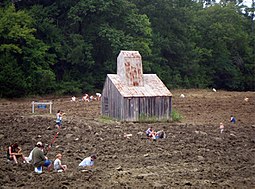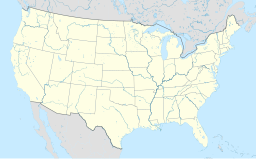Esperanza Diamond
| Crater of Diamonds State Park | |
| Arkansas state park | |
|
Digging for diamonds, 2007
|
|
| Named for: Diamond mine | |
| Country | United States |
|---|---|
| State | Arkansas |
| Regions | Ouachita Mountains |
| County | Pike |
| City | Murfreesboro |
| Location | Visitor Center |
| - coordinates | 34°1′59″N 93°40′13″W / 34.03306°N 93.67028°WCoordinates: 34°1′59″N 93°40′13″W / 34.03306°N 93.67028°W |
| Area | 911 acres (369 ha) |
| Created | 1972 |
| Management | Arkansas Department of Parks and Tourism |
| Website: Crater of Diamonds State Park | |
Crater of Diamonds State Park is a 911-acre (369 ha) Arkansas state park in Pike County, Arkansas, in the United States. The park features a 37.5-acre (15.2 ha) plowed field, the world's only diamond-bearing site accessible to the public. Diamonds have continuously been discovered in the field since 1906, including the Strawn-Wagner Diamond. The site became a state park in 1972 after the Arkansas Department of Parks and Tourism purchased the site from the Arkansas Diamond Company and Ozark Diamond Mines Corporation, who had operated the site as a tourist attraction previously.
In August 1906, John Huddleston found two strange crystals on the surface of his 243-acre (98 ha) farm near Murfreesboro, Arkansas, and soon became known as the first person outside South Africa to find diamonds at their original source. The following month, Huddleston and his wife, Sarah, sold an option on the 243 acres (98 ha) to a group of Little Rock investors headed by banker-attorney Samuel F. (Sam) Reyburn, who undertook a careful, deliberate test of the property.
After 1906, several attempts at commercial diamond mining failed. The only significant yields came from the original surface layer, where erosion over a long period of time had concentrated diamonds. In the early period, 1907–1932, yields from this "black gumbo" surface material often exceeded thirty carats per hundred loads (50 mg/Mg) (standard 1600-pound tramload of the early period). Highest yields from the undisturbed subsurface material (described as kimberlite or volcanic breccia by the U.S. Geological Survey) were two carats per hundred loads (3.5 mg/Mg) in 1908 and about two carats per hundred short tons (4.4 mg/Mg) in 1943−1944.
...
Wikipedia



